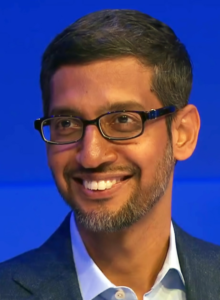 Google has claimed an advance in quantum computing related to the devilishly difficult problem of quantum error correction.
Google has claimed an advance in quantum computing related to the devilishly difficult problem of quantum error correction.
In a blog post from Google and Alphabet CEO Sundar Pichai, he said company quantum AI researchers have “experimentally demonstrated” that by increasing the number of qubits – the basic unit of quantum information – it’s possible to reduce errors.
“Our breakthrough represents a significant shift in how we operate quantum computers,” Pichai stated. “Instead of working on the physical qubits on our quantum processor one by one, we are treating a group of them as one logical qubit. As a result, a logical qubit that we made from 49 physical qubits was able to outperform one we made from 17 qubits.”
He added that the research has been published in a paper, “Suppressing Quantum Errors by Scaling a Surface Code Logical Qubit,” in the scientific journal Nature.
Pichai said this is a significant milestone because the orchestrated manipulation of qubits (“quantum agorithms”) by quantum computers, is a highly sensitive operation – so sensitive “that even stray light can cause calculation errors.” It’s a challenge that heightens as quantum computers and the number of qubits grows. “This has significant consequences, since the best quantum algorithms that we know for running useful applications require the error rates of our qubits to be far lower than we have today,” he said.

Sundar Pichai — Google / Alphabet
Bridging this gap, Pichai said, will require quantum error correction, with protects information by encoding it across multiple physical qubits to form a “logical qubit.” This, he said, “is believed to be the only way to produce a large-scale quantum computer with error rates low enough for useful calculations.
“Instead of computing on the individual qubits themselves, we will then compute on logical qubits,” he said. “By encoding larger numbers of physical qubits on our quantum processor into one logical qubit, we hope to reduce the error rates to enable useful quantum algorithms.”
“It’s the first time anyone has achieved this experimental milestone of scaling a logical qubit,” Pichai said.
Additional details are offered in another blog post from Google’s Hartmut Neven, vice president of ngineering, and Julian Kelly, director of quantum hardware.
Error correction poses one of the biggest barriers to the development of mature, stable quantum computers able to handle workloads beyond the reach of classical HPC systems. This was stated in an article famous in quantum circles published by IEEE Spectrum in 2018, “The Case Against Quantum Computing,” by Mikhail Dyakhonov, a professor of physics at Laboratoire Charles Coulomb, Université Montpellier in France.
He declared that quantum error correction is a practical impossibility because “it’s estimated that the number of qubits needed for a useful quantum computer … is between 1,000 and 100,000,” which means a quantum system “needs to process a set of continuous parameters that is larger than the number of subatomic particles in the observable universe.”
Pichai averred that future quantum advances “will require us to achieve even more technical milestones in order to scale to thousands of logical qubits with low error rates. There’s a long road ahead — several components of our technology will need to be improved, from cryogenics to control electronics to the design and materials of our qubits. With such developments, large-scale quantum computers will come into clearer view.”




